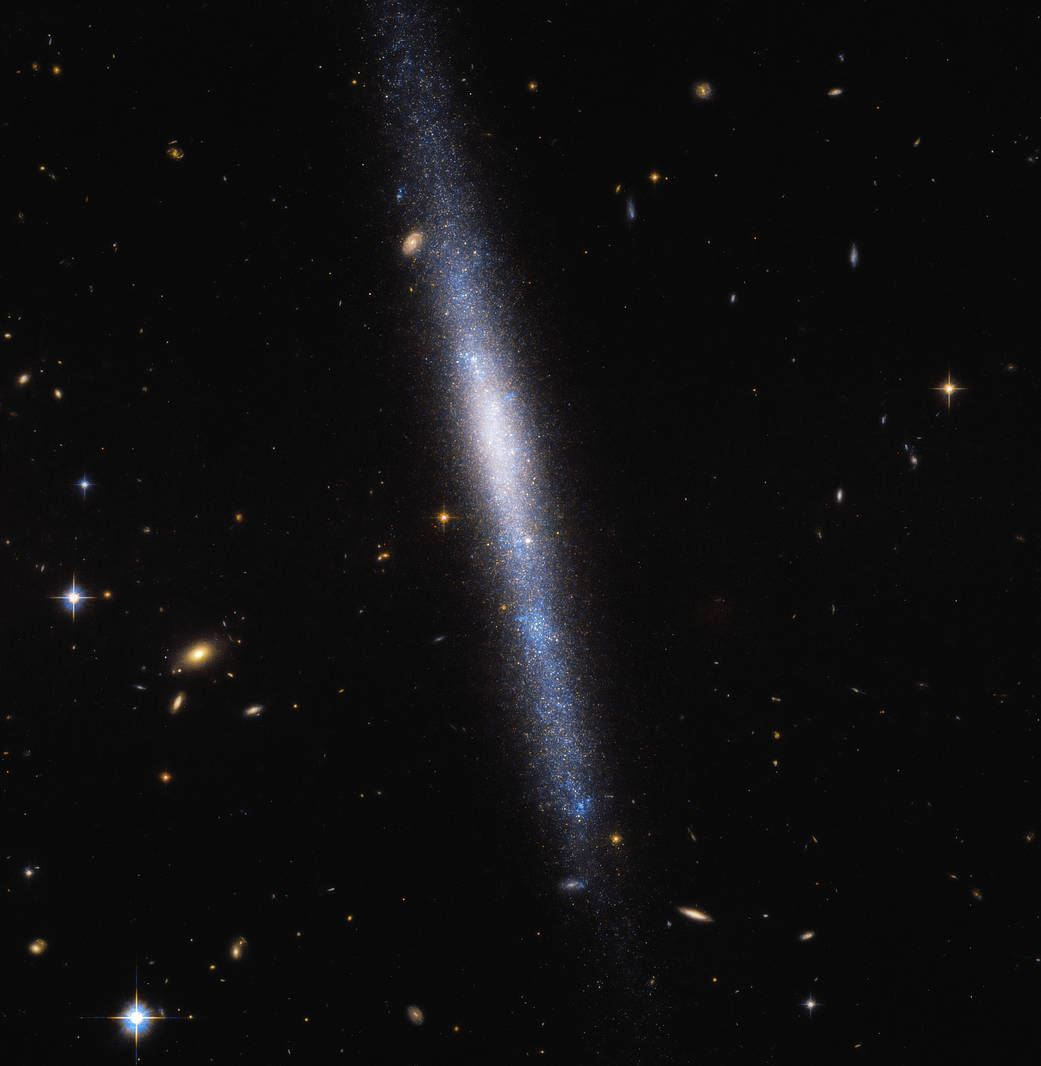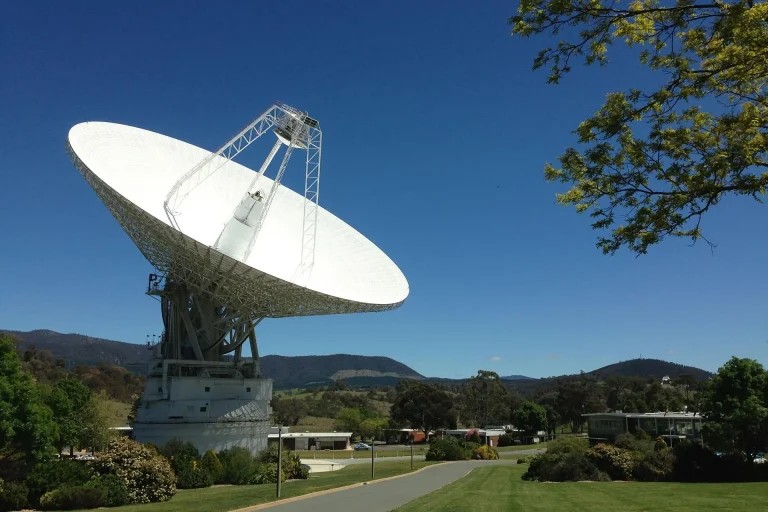The galaxy UGCA 193, seen here by the NASA/ESA Hubble Space Telescope, is a galaxy in the constellation of Sextans (the Sextant). Looking rather like a waterfall, UGCA 193 appears to host many young stars, especially in the lower portion of this view, creating a striking blue haze and the sense that the stars are falling from “above.”
The blue color of UGCA 193 indicates the stars that we see are hot — some more than six times hotter than our Sun. We know that cooler stars appear to our eyes as redder, and hotter stars appear bluer. A star’s surface temperature and color are also linked to its mass, with heavier stars “burning” at higher temperatures, resulting in a blue glow from their surfaces.
Text credit: European Space Agency (ESA)
Image credit: ESA/Hubble & NASA, R. Tully; Acknowledgment: Gagandeep Anand
由美国宇航局/欧洲航天局哈勃太空望远镜拍摄的UGCA 193星系,是六分仪星座中的一个星系。UGCA 193看起来很像一个瀑布,它似乎容纳了许多年轻的恒星,尤其是在这张照片较低的部分,创造了一个引人注目的蓝色薄雾和恒星从“上方”落下的感觉。
UGCA 193的蓝色表示我们看到的恒星很热——比我们的太阳高六倍多。我们知道,较冷的恒星看起来更红,而较热的恒星看起来更蓝。恒星的表面温度和颜色也与其质量有关,质量较重的恒星在较高的温度下燃烧,从而使恒星的表面发出蓝色光。
文字来源:欧洲航天局(ESA)
图片来源:ESA/Hubble & NASA, R. Tully;致谢:Gagandeep Anand







